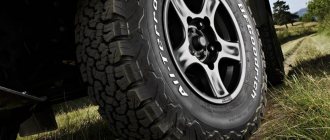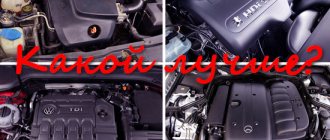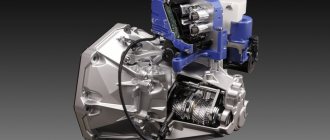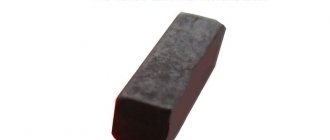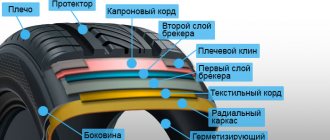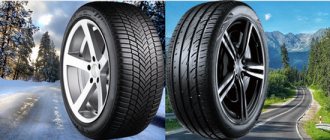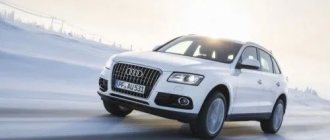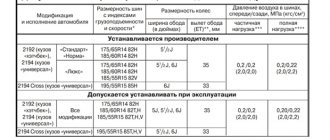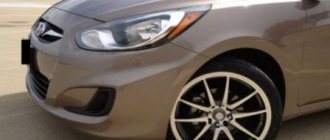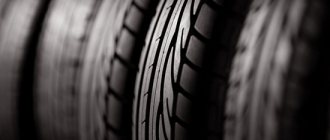Runflat what is it? In short, runflat tires are a special type of tire equipped with reinforced sidewalls made from wear-resistant materials. RunFlat technology (some also call it “runflat”) has both advantages and disadvantages.
We'll talk about this in more detail later. Now it is worth noting that they are produced by many foreign concerns. An additional section will list popular tires made using this technology.
4 main reasons for increased tire wear: how to save tires
Run Flat
A tire puncture is a common problem that often occurs on Russian roads. For many drivers, solving this problem is not very difficult: just install a spare tire and drive to the nearest workshop. However, there are situations when this is quite problematic. For example, not every girl can install a spare tire on a car. In addition, two tires are often damaged at once. It is to solve such situations that the RunFlat technology was created. It allows you to continue driving even if the tire is flat or there is a loss of pressure due to a puncture. Like any development, RunFlat has its own characteristics, advantages and disadvantages. You will learn about all the important nuances of the technology from this article.
Underline whatever applicable
Similar wheels are now standard on almost all premium segment models, and this is no coincidence. Because run-flat has more advantages than disadvantages, but the latter are significant. If you want to become the owner of a newfangled “runflat”, then you will have to understand the complex and not always logical labeling. Various models have a wide variety of names, trying to completely confuse the buyer: Run Flat, Flat Run, RunOnFlat; ROF, ZPS, RFT, ZP, SSR. The Bavarian auto giant, for example, uses its own abbreviation for designation - RSC, which stands for Run-flat System Component.
Runflat what is it?
Translated into Russian, Run-Flat literally means “flat ride.” This technology allows you to drive further even if the tires puncture. Run-flat tires differ from conventional tires in the following ways.
- Wide side ring with additional reinforcement.
- Rubber resistant to high temperatures.
- Durable sidewall.
- The presence of amplifiers in the frame.
Thanks to these features, run-flat tires do not sag under the weight of the car in the event of a puncture in the tread, as conventional tires do. The reinforced sidewall and other RunFlat elements do not allow the rubber to jump off the rim and keep the car moving straight.
The essence of the technique
So, what is runflat tires?
The design feature of the technological solution is that the side planes of the tire are reinforced.
A puncture of a standard tire leads to the fact that it very quickly loses pressure, deflates, and after just a few kilometers the vehicle begins to drive on a bare rim. Driving like this is unsafe; you need to stop and replace the damaged wheel.
Strengthening the sides allows the wheel to better support the weight of the car body. The power reserve increases many times over, that is, you can safely and comfortably get to a garage or service center to change a wheel in the most comfortable conditions, to install not a simple “banana”, but a normal tire.
There are no special restrictions on the operation of a punctured wheel made using the Runflat method. But a couple of rules should be followed:
- The maximum speed is 80 kilometers per hour. Exceeding it poses a serious danger; the rigidity of the structure may not be enough, which will provoke a rupture and loss of control.
- Power reserve – no more than 100 kilometers. However, this is more than enough even when driving on a country road.
It should be noted that the less the car has driven after a puncture, the higher the chance of a complete tire repair. This is an important economic point, since this tire costs significantly more than its standard counterpart.
Are there any disadvantages?
The main advantage of Run Flat is quite clear, but such tires have certain features that can be classified as negative aspects. The first point we have already noted is the high cost, so buying a whole set will cost a pretty penny.
Other points are as follows:
- Some drivers note a decrease in comfort during the trip; driving through obstacles is felt more acutely. This is due to the design features of the wheel; a rigid cord absorbs shock and vibration loads worse.
- A low depreciation coefficient increases the load on the suspension and, as a result, reduces its service life.
- The increased weight of tires leads to an increase in fuel consumption and a decrease in the dynamic characteristics of the vehicle.
- Installation of the tire is possible only in a specialized service, as it requires the use of special installation equipment. Russian realities are such that not every workshop has such equipment.
Experts also advise installing such tires only on cars equipped with electronic pressure monitoring systems. The fact is that with a minor puncture, the car’s behavior on the road may not change at all, so the driver will not even know about it, but the fact of damage will sooner or later play a role.
The pressure monitoring system will immediately detect a malfunction, and the sooner appropriate actions are taken, the better. For both the driver and the car.
Run-flat support rails
They are sometimes called zero pressure rubber. Tires with the runflat system have a reinforced sidewall and frame. In addition, the tires have a heat-resistant compound composition and special longitudinal ribs. All this provides better cooling while driving. If the runflat tire has been damaged, it will be able to stay on the rim and provide traction. The disadvantage of these tires is that they can only be installed on vehicles equipped with pressure control systems (RDC, TPMS, RPA) and directional stability control (ESP).
RunOnFlat tires
- Yandex.Market rating: Yandex.Market: 4.5
Goodyear Eagle F1 Asymmetric 3 tiresSeasonality: summer Spikes: no Diameter: 17 / 18 / 19 / 20 / 21 / 22
More details
- Yandex.Market rating: Yandex.Market: 4.5
Goodyear EfficientGrip Performance Tires
Seasonality: summer Spikes: no Diameter: 15 / 16 / 17 / 18 / 19 / 20
More details
- Yandex.Market rating: Yandex.Market: 4
Goodyear Wrangler HP All Weather Tires
Seasonality: summer Spikes: no Diameter: 16 / 17 / 18 / 19
More details
- Yandex.Market rating: Yandex.Market: 4.5
Goodyear Eagle F1 Asymmetric 2 tires
Seasonality: summer Spikes: no Diameter: 16 / 17 / 18 / 19 / 20
More details
- Tires Goodyear Eagle F1 Asymmetric Suv 4×4
Seasonality: summer Spikes: no Diameter: 19 / 20 / 21
More details
- Goodyear Eagles2 tires
Seasonality: summer Spikes: no Diameter: 19
More details
- Yandex.Market rating: Yandex.Market: 3.5
Goodyear Excellence Tires
Seasonality: summer Spikes: no Diameter: 16 / 17 / 20
More details
- Yandex.Market rating: Yandex.Market: 4
Goodyear UltraGrip Performance 2 Tires
Seasonality: winter Spikes: no Diameter: 16 / 17 / 21
More details
Operating conditions for run-flat tires
Run-flat tires do not eliminate the need to visit a tire shop. However, it is thanks to them that you can refuse the services of a tow truck and not carry a “spare” with you.
In the event of a puncture, tires with the runflat system will not allow you to travel many kilometers (on average up to 80 km). At the same time, you should refrain from making sudden maneuvers and limit the speed to 80 km/h. It is precisely because of these conditions that the use of run-flat tires on cars without a pressure monitoring system is prohibited. The driver may not notice the damage and continue to drive aggressively, which is extremely dangerous. In addition, it is worth remembering that each manufacturer sets its own speed and distance limits for driving on damaged run-flat tires.
Run-flat tires are sold both separately and as a set with a wheel. Which option to choose is a personal choice for each driver. The supply of assembled run-flat tires is a unique offer from Mercedes-Benz and BMW dealers.
Installing tires with runflat technology will not cause additional difficulties. Re-bulking can be done every season. To carry out the work, you will need professional qualifications and Easymont (“Third Hand”) equipment, which allows you to easily remove tires with the RunFlat system. All this can be found in a quality tire shop. Some models also allow for puncture repair. You can learn how this is done from this video about run-flat tires:
Which brand should you choose?
Most of the world's leading tire manufacturers have run-flat tires in their product range and designate them with special markings:
- Goodyear RunOnFlat
- Nokian - RFT, RunFlat, RunFlat Tires;
- Dunlop ROF
- Bridgestone RFT
- Michelin - ZP (Zero Pressure)
- Continental - SSR (Self Supporting)
- Yokohama ZPS.
The largest automobile concerns, such as BMW, Mercedes or Audi, also have special markings for run-flat tires installed on cars of the corresponding brands.
When choosing tires in a store, try to lift it; as a rule, RunFlat is much heavier than its counterparts developed without this technology. In addition, rubber with a reinforced frame gives a harder and more elastic contour; if you press on it with your hands, it is practically not subject to deformation. And of course, RunFlat comes with a price tag - the cost of one tire can be 20, 30, or even half as expensive as regular options.
What about the shortcomings?
Just as spots appear on the Sun from time to time, so in life there are no ideal things. A serious disadvantage for the car owner is a decrease in the level of comfort when driving on rough roads. Since RunFlat technology increases the rigidity of the tires, every bump, pothole or pit on the road is clearly felt by passengers in the cabin.
At the same time, such increased rigidity can also lead to a technical malfunction of the car - the suspension settings are lost and it is necessary to carry out an extraordinary wheel alignment.
According to statistics, on average, run-flat tires wear out the tread faster than conventional tires; this is also due to driving style.
Also, since run-flat tires are not always repairable (manufacturers often put additional markings on repairable tires), when replacing a punctured tire, you will have to change the second wheel, and this is an additional expense. But at the same time, for cars that are equipped with this type of tires at the factory, manufacturers recommend continuing to use RunFlat since all standard car safety systems are configured to work with tires of increased rigidity.
The Koleso-OZ.ru online store offers a wide range of any tires, wheels and tools for performing tire fitting work. Our store offers many options for summer, winter, and all-season tires. Purchase wheels and tires with a radius from 14 to 23 inches at prices officially recommended by the manufacturer. Excellent selection and experienced consultants who will help you choose wheels for each car.
Advantages and disadvantages of run-flat tires
The advantages of safe tires are obvious.
- Safety.
- Saving time on sorting.
- Improved response to steering movements.
- Saving space in the trunk by eliminating the need for a spare wheel.
RunFlat technology also has some disadvantages.
- Limited use (the vehicle must have a tire pressure monitoring system).
- High price (unlike regular tires, they are 15-25% more expensive).
- Increased sidewall rigidity leads to reduced driving comfort.
Eventually
The idea itself, embodied in run-flat tires, is, of course, good and correct. Everything that improves road safety must be implemented and improved. But, today, such tires have serious drawbacks, and in addition, for their normal and widespread use, an appropriate and, again, widespread, supporting infrastructure is needed. Without all this, such tires, although safe, remain quite rare on our roads. Let's hope that the situation with runflat tires will improve in the future.
Related publications
- Pros and cons of all-season tires
- How to properly store tires
- Forged wheels: what are they and how do they differ from cast wheels?
- Velcro rubber: what is it and how does it differ from spikes
Leave a review
Cancel reply
Winter tires with run-flat technology
Continental IceContact 2 SUV
The tire design from the German manufacturer has a rigid, reinforced sidewall. Even in the event of a loss of pressure, it does not differ in appearance from a conventional inflated tire. At the same time, runflat tires from the Continental brand have high levels of acoustic comfort. The tires quickly respond to the movement of the car's steering wheel and ensure driving safety due to the directional pattern and the inclusion of steel studs.
Goodyear Eagle UG GW-3
Tires from an American manufacturer, created using the runflat system, are suitable for those who like to drive at high speeds. The tires are not studded, but cope well with wet snow porridge. At the same time, decent grip of the car with the road is noted during sharp braking and when cornering at speeds of up to 100 km/h. The design of run-flat tires provides acoustic comfort and the ability to continue driving even with a sudden loss of pressure.
Bridgestone Blizzak RFT
These tires from the Japanese manufacturer are available in diameters from R16 to R19. The reinforced sidewall of tires made using run-flat technology allows you to maintain directional stability even during a loss of pressure due to damage. The asymmetrical pattern promotes reliable adhesion to any type of coating and a high level of maneuverability. The RC polymer modifier in the rubber composition ensures the stability of run-flat tires during temperature fluctuations.
Nokian Tires Hakkapeliitta 7 SUV
RunFlat technology is implemented in the design of tires from sizes R17-R19. The special rubber composition and reinforced sidewalls allow the car to travel up to 100 km even if the tire pressure is deflated. The symmetrical pattern with the inclusion of metal studs will provide reliable grip on icy and snowy roads.
RunOnFlat tires from Goodyear
What is RunOnFlat technology? This is a symbol for “Runflat” technology on Goodyear tires.
The Goodyear manufacturer has been one of the leaders in the production of high-tech tires that meet safety requirements and the expectations of car enthusiasts for many years. Runflat technology from Goodyear is implemented at the highest level: the manufacturer tried to improve the design features of the tire as much as possible and minimize disadvantages.
Many drivers who have tried tires from other brands with this technology have complained about a significant decrease in acoustic comfort associated with driving on hard tires. In Goodyear Run Flat tires, the developers tried to eliminate these issues.
Tested in size 215/65 16
To compare summer tires in terms of quality: which is better, faster and more reliable, the German auto club ADAC, in collaboration with two more European clubs (Austrian ÖAMTC and Swiss TCS), conducted an exciting test in 2019. This was a test drive of reinforced tires for commercial vehicles.
The most popular size is 215 65 r16, but it was the first time he participated in competitions of this rank. Wheels with these parameters are found on crossovers and small SUVs and pickups, minibuses like our Gazelle, family trailers and vans. In general, wherever preference is given not to speed, but to carrying capacity.
In all tests conducted by the ADAC club, the tires tested are Volkswagen cars, and this one was no exception.
Test participants
In total, 16 sets of tires from a variety of manufacturers took part in the competition, the top ten of which we would like to introduce you to:
| Tire model | Place in the ranking | Manufacturer country |
| Apollo Altrust | 1 | Holland |
| Goodyear EfficientGrip Cargo | 2 | USA |
| Pirelli Carrier | 3 | Italy |
| Nokian Line | 4 | Finland |
| ContiVanContact 200 (Continental) | 5 | Germany |
| Maxxis MCV3+ VanSmart | 6 | Taiwan |
| Kumho PorTran KC53 | 7 | South Korea |
| Falken Linam Van01 | 8 | Japan |
| Uniroyal Rain Max 3 | 9 | Belgium |
| Michelin Agilis Plus | 10 | France |

